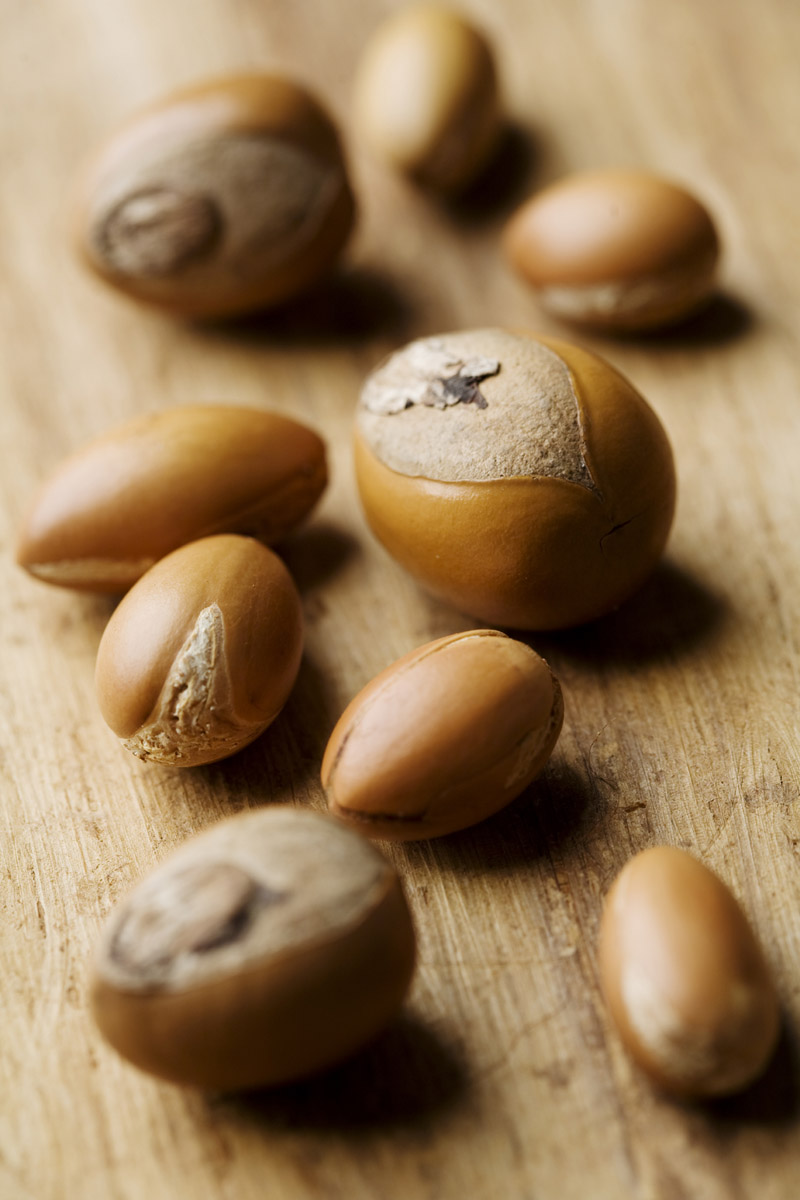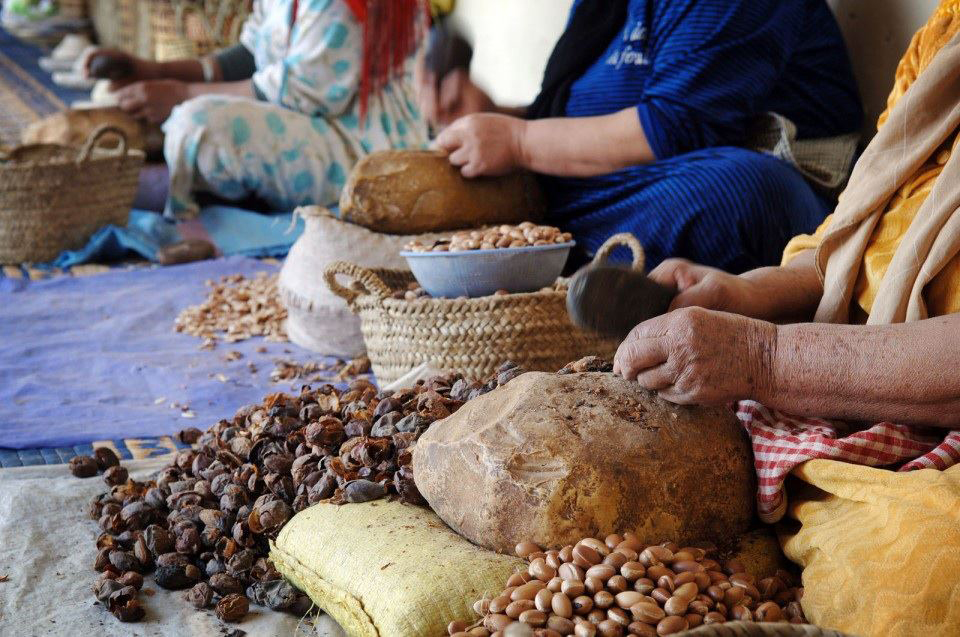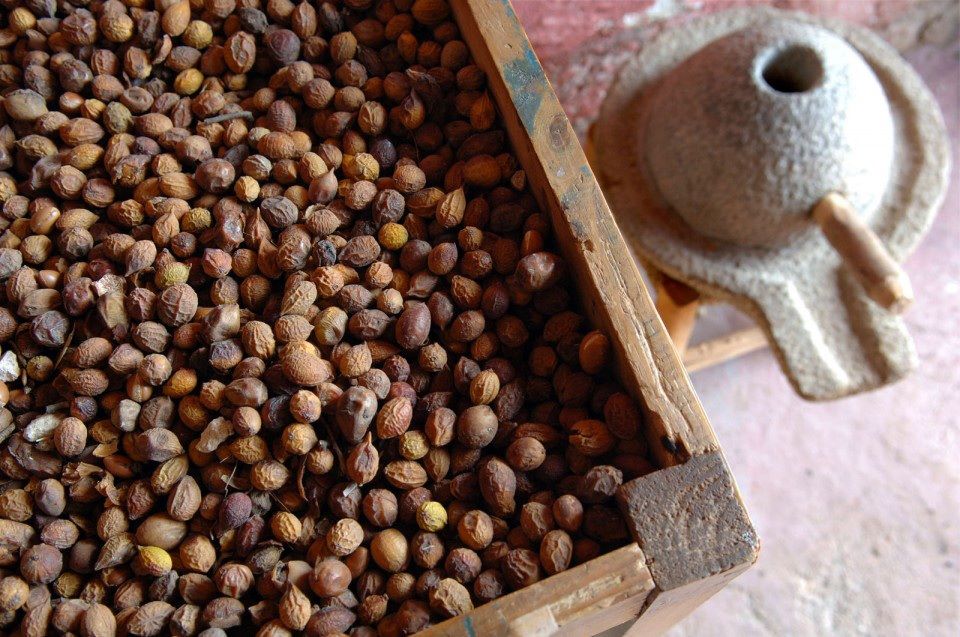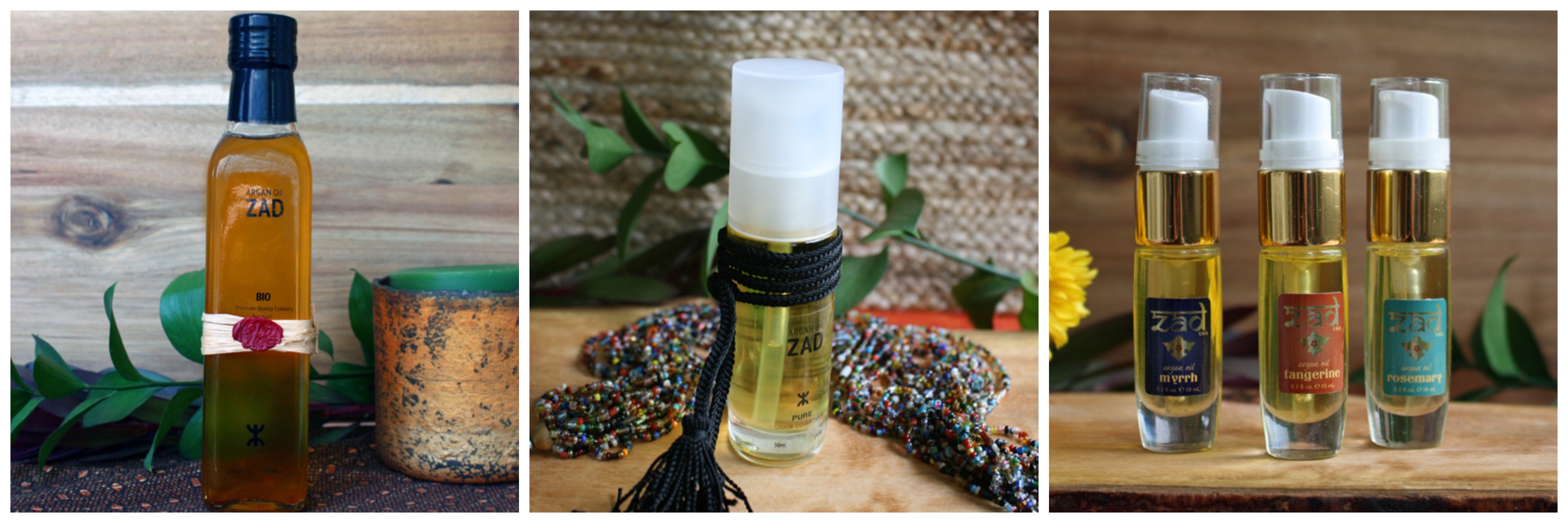One drizzle adds a savory roasted flavor to grilled dishes. A spoonful serves as a “cure all” to heal any ills. Running a palmful through the hair leaves tangles silky and soothed, and is even rumored to prevent grays. In it’s native Morrocco, Argan Oil is like liquid gold-- and the secret seems to be slowly catching on. Used throughout the home for a wide variety of applications, this precious nut oil is perhaps one of the most unique, powerful and underestimated ingredients in traditional food.

A saunter down the cosmetic aisle nowadays leaves you with an interesting impression of argan oil. Growing in popularity in the United States in recent years, the words “Moroccan Argan Oil” can be found stamped onto colorful shampoo and lotion bottles of all shapes and sizes, and usually in some selection of fancy gold lettering. It is proudly advertised as an exotic “natural” beauty ingredient and frequently whispered in sultry voices by models on television ads, as they flip their perfectly shining sheets of hair. It’s true: argan oil seems to work wonders for beautifying the body. Yet this alluring miracle “stuff” is far more than some jazzed up and commercialized cosmetic fad. Argan oil is in fact a rich and healthy traditional fat, with many important medicinal and culinary uses. It is about time for this nut oil to be recognized and respected for it’s deep history, impressive handcrafted production, and the unique nutritional benefits that it offers-- not simply a trend to be gabbed about by the hottest fashionistas of the times.
1. Argan oil is an important traditional fat with many uses.
In small cooperatives skirting semi-arid forests in southwestern Morocco, Berber women have been crafting argan oil by hand for centuries. With a flurry of calculated peeling, pounding and roasting amidst stone mills and open fires, beautiful shimmering argan oil is created at their fingertips. The task is artisanal in nature, and left almost exclusively up to the charge of these respected women, who have learned the trade through generations of passed-down wisdom.

Argan oil is produced from the fruit kernels of the "Argania Spinosa" or Argan Tree, which grows in canopied sprawls in a small region of Morocco. Here, the oil has been used for centuries with a wide variety of functions. From creating tasty dishes to healing colds or greasing tools, it seems the answer to any problem in this Northern African region has long been “just put argan oil on it.”
To create the oil using traditional methods, argan fruits are first harvested from stands of trees and left to dry on the roofs of mud houses. The pits are then manually removed with the help of two stones. A thin protective skin is peeled off, and the pits are subject to a light toasting, a key step for giving the oil its distinct nutty flavor. The slightly heated pits are then ground and slowly kneaded in traditional stone mills to produce a creamy paste. After about 30 minutes of continuous mixing, and with the careful addition of small amounts of boiled water, the precious oil slowly dissociates from the rest of the paste. This golden liquid is argan oil in its most authentic form.
About 30 kg of fruit are needed to produce just one liter of true argan oil; that's the harvest of approximately 5 trees. Given the intricate process of crushing the nuts by hand, local Berber women work almost a day and a half to produce just one liter of oil. This explains the high value and esteem associated with original hand-pressed argan oil.
2. Argan oil is a healthy culinary fat to use in the kitchen.
While the most popular global use for argan oil is to rejuvinate the skin and de-frizz the hair, there are actually two primary grades of argan oil: culinary and cosmetic.

Culinary argan oils have been roasted and contribute a deep flavor and subtly smoky aroma to the final product. In native Moroccan cuisine, argan oil is used liberally to season dishes, acting as a condiment in salads and adding flavor to tagines, couscous, grilled vegetables and desserts. These dishes have also been adopted by esteemed French chefs in more modern years and consequently introduced to menus all across the world.
Cosmetic argan oils are used in a number of beauty treatments from skin soothing lotions to hair conditioning masks. These oils are more clear and light yellow in appearance, as they have been left unheated to avoid adding odors, flavors or scents that may be bothersome when applied topically. For the most potent effects, argan oil is available without additives to be used as a multi-purpose serum for healing skin and hair.
3. Argan oil has many benefits including anti-inflammatory and antioxidant capabilities.
Although crafting argan oil by hand is both tedious and time-consuming, efforts are fully justified by the precious product that results. Argan oil is about 80% unsaturated fat by composition, of which about 32% is essential linoleic fatty acids and 47% oleic acid. Argan oil is actually more heat-stable and almost three times richer in vitamin E than ever-popular olive oil. The high content of linoleic acid and tocopherols gives it the unique capacity to reduce rates of inflammation and neutralize free radicals within the body.
As a dynamic healthy fat, argan oil has been found to prevent oxidation and aging, while simultaneously stimulating digestion and boosting brain power. Argan oil contains rare sterol molecules and phytochemicals that cannot be found in other plant-derived oils. Modern research has linked the following advantages to argan oil consumption.
- Powerful anti-oxidant action
- Promotes healing of the skin and strengthens hair
- Stimulates the nervous system and builds brain capacity
- Reduces joint and rheumatism pain
- Calms hypertensive tendencies
- Facilitates digestion by increasing pepsin
- Stabilizes blood sugar/insulin levels
4. You can make a difference by supporting sustainable, hand-crafted argan oil products.
Growing global demands for both culinary and cosmetic argan oil have created pressure to expand production efforts. While this widening interest in argan oil has the potential create a positive socioeconomic and environmental impact, it must be dealt with respectfully. Two contrasting methods are currently being used to extract the oil: the traditional manual pressure practice used in small native cooperatives and the high-impact mechanical techniques employed by big companies. As you can imagine, these methods have quite different implications not only for the quality of the oil, but also with the social structures of local people and sustainability of fragile Argan trees.
It is important to use argan oils that have been sourced conscientiously. We like ZAD Argan Oil, because it is one of the only varieties available in the United States that has been exclusively created by local Berber women using authentic methods and sourced directly. We encourage you to check out their Culinary Argan Oil, Cosmetic Argan Oil and Argan Oil Hair Kit to offer support to their efforts and experience argan oil in its true form.

